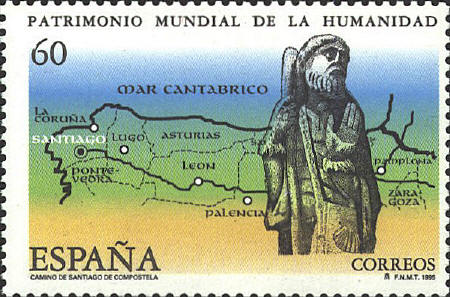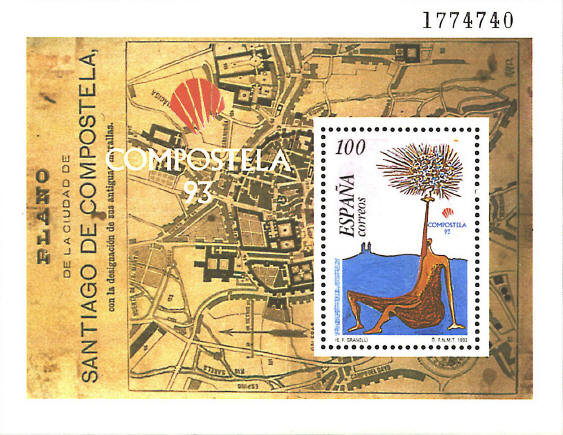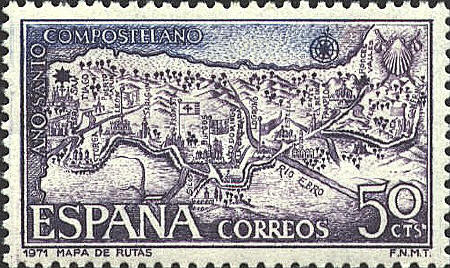|
Santiago de Compostela
Santiago de Compostela is
the birthplace of Christianity in Spain. St. James (Santiago) is
supposed to have evangelized the area before returning to the Holy
Land to die. Following his death, his disciples brought his remains
back to Spain.
“Tradition says that the disciples of St. James
spirited away his dead body and set sail for Jaffa. Seven days later
the ship, propelled by wind and waves, arrived on the coast of
Galicia. A man was riding his horse beside the sea. As the ship neared
the horse bolted and the man was carried out by the waves. Instead of
drowning, the rider surfaced covered with cockleshells. Since then the
cockleshell has been the symbol of St. James and the badge of a
pilgrim to Compostela.”
Sr. Carol Anne O’Marie
Murder Makes a Pilgrimage
Delacorte Press, 1993, p. 11

The souvenir sheet was
issued in 1993 to commemorate the declaration of Santiago as a World
Heritage Site. The sheet shows the plan of the town of Santiago. The
stamp shows "Figura sentada" by I. Diaz Pardo.

In 813 the remains the
apostle St. James the Great were discovered. “Compostela” refers to
the field of stars seen by a hermit at the site. As a place of
political and religious importance it rivaled Rome and even Jerusalem.
Charlemagne, St. Francis, St. Dominic, and many others made the
pilgrimage. Under the name Santiago Matamoros, St. James the
Moor-Slayer, he became the spiritual leader of the battle against
the Moslem Moors.

The map above and
the one following are based on Diego Ribeiro's Icara Universal,
1529. The one above shows pilgrimage routes to Santiago in Spain,
while the one below shows the main pilgrimage routes in Europe.

 |
